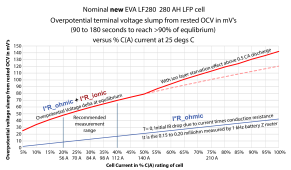angrygoat
New Member
- Joined
- Nov 13, 2022
- Messages
- 18
I was browsing and noticed this lifep04 cell said to stop using it once the capacity falls below 70%.

 www.docanpower.com
www.docanpower.com
Why? Does it become dangerous? Or is it an efficiency thing? I assume this is typical for lifepo4 cells?
Seems a shame to discard a battery that can still store a whopping 70%.
| End of Life Management | Capacity/Typical Capacity <70% During the use of the battery, when the end of life is exceeded, should stop use the battery. |

China Stock CATL 280Ah LiFePO4 3.2V Prismatic Cell with Laser-Welded M6 Studs
Note:This link is for sending inquiries only. We'll provide a complete quotation, including DDP sea shipping costs, within 24 hours.For any online orders paid via DDP sea shipping, we'll double-check and inform you if any extra DDP shipping costs are required. We apologize for any inconvenience caus
 www.docanpower.com
www.docanpower.com
Why? Does it become dangerous? Or is it an efficiency thing? I assume this is typical for lifepo4 cells?
Seems a shame to discard a battery that can still store a whopping 70%.



